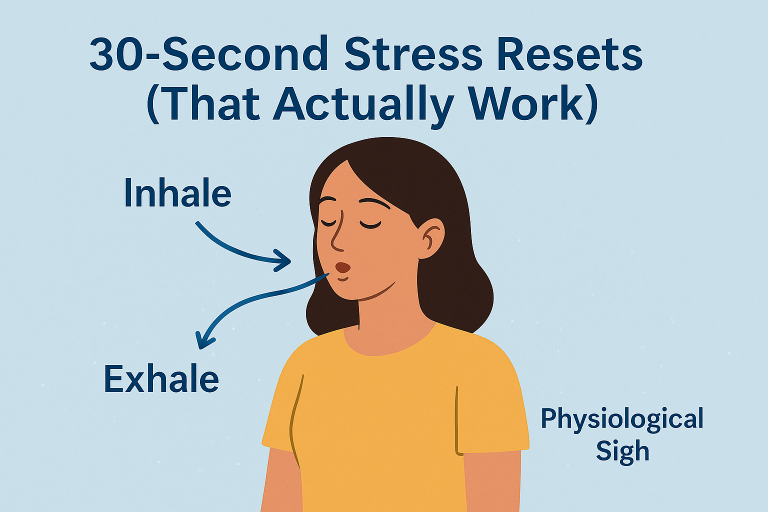You want to eat healthier, but you don’t know where to start. You want to exercise more, but there’s always something in the way of your workout schedule. You have a lot on your plate and just can’t find time for anything new.
Well, I’m going to tell you precisely what you need to do right now if you’re serious about changing a habit: identify a specific trigger that will remind you when it’s time to take action.
To successfully change any habit, we need an anchor or trigger that reminds us how important it is and helps us maintain our focus over time to change our behavior until it becomes as automatic as possible.
In this article, I’ll talk about some different approaches people use.
Decide on the habit you want to work on
Once you’ve decided on your habit, it’s time to get started.
Establish a simple cue. The Quickshot approach is designed for quick, lasting change. Pick one action-oriented activity (e.g., “run up the stairs at work”). Follow the plan for 21 days until it becomes automatic, and reward yourself with a satisfying pat on the back.
Use a habit stacking routine. This is an excellent approach if you have a small window of opportunity, like walking from your office door to your desk or taking a shower.
You can use any existing routine as the cue for your new behavior. The reward is whatever you’re already getting from that routine (e.g., finally relaxing after work).
Pick an inspiring role model. This might be one of the most powerful tools in changing old habits. Find somebody who has successfully transformed a routine you’d like to change yourself.
Talk to them about their experience, find out what they did and how successful they were. Try to emulate the same behavior in your own life (e.g., eating one more vegetable or taking an extra walk each day).
Identify a specific trigger that will remind you when it’s time to take action
Become aware of the triggers that are already influencing your behavior. Once you’ve identified them, you can use them to your advantage (e.g., if you do most of your writing at night because it’s quiet and peaceful, schedule a morning session).
Schedule your new routine right now. Your calendar is a powerful tool that can help you maintain focus and move your habit from wishful thinking to reality.
Make sure the new routine fits into an open space in your schedule, so there’s no choice but to do it (e.g., after getting home from work) — plan definite times for each action.
Use your surroundings to get you started. Instead of trying to figure out what routine you’re supposed to follow, just look around and use whatever’s available (e.g., if you sit at a desk all day, stand up during lunch).
Make a plan for how you will accomplish your goal
If you don’t have a healthy habit to replace a current negative one, it’s much harder to create a positive pattern.
Think about your bad habits and figure out what good ones can replace them. For example, if you have a problem watching too much TV at night, consider using that time instead for exercise or studying (i.e., positive habits).
It would be best if you also tried to think of external factors that you can use to push yourself into changing your behavior. These could include tying the new habit to an existing ritual (e.g., brushing your teeth), setting consequences for not completing the new task, etc. (e.g., putting your running shoes by your bed at night so you see them first thing in the morning).
Taking this approach can help make it easier to break old habits and form new ones.
If you’re struggling with something, don’t be afraid to ask for help or advice from friends, family, or experts.
You can also use online guides to walk you through specific steps to develop a new healthy habit.
Remember, everyone experiences difficulties when trying to change, but don’t be discouraged; anyone can make positive changes in their life!
Break down the habit into small steps and start with an easier one
Make the new routine as easy as possible. Don’t try to do too much too soon. One way of working on your new habit is to start with a tiny step (e.g., if you want to stop checking social media sites at work, close all of them except one).
Do that for a few days, and when you feel comfortable with the one, add another.
Keep repeating the process until you’ve developed your ultimate goal.
Reward yourself for your hard work and progress
Reward yourself every time you complete something worthwhile (e.g., if you manage to go an entire day without watching TV, reward yourself with that book you bought but never read).
Think about what’s meaningful to you and use a system that will encourage you to keep going.
Reward yourself by giving yourself something that makes you feel good about yourself or doing something fun.
Don’t go overboard, though. On the one hand, you don’t want to deny yourself all enjoyment and feel bad about it later.
On the other hand, a reward should be a positive stimulus that encourages you to keep going with your new routine (e.g., once I lose 20 pounds, I’ll treat myself to a new pair of jeans).
Make sure you set a reasonable time frame for your new habit. If it’s too long, chances are you’ll lose motivation and focus (e.g., don’t plan on changing your eating habits forever; just until summer).
Keep track of your progress…
… so that when things get tough, you can look back at all the progress made.
Keeping a record of your progress can be a great way to see how far you’ve come and what steps need improvement.
Keep track of the positive changes you’re experiencing, and pay attention to any negative aspects that may have developed or anything that you notice is more complicated than before.
For example:
- I’m getting hungry an hour later in the day
- I have to keep my mind occupied, so I don’t think about food
- I’m not starting my day with exercise
If you find problems like this, think of ways to solve them. If you’re not hungry an hour later in the day, is it because you’re overeating during lunch?
Do more cardio at the beginning of your workout routine to burn off some energy before weights. Figure out what the cause is and then solve your problem.
Also, keep track of what you’re eating to determine if your habits have changed or if they’re less healthy than before.
This not only helps you see how far you’ve come, but it can also help you realize areas where you need improvement!
Remember, it’s normal for there to be rough patches in the process. Don’t be discouraged. Good habits take time and effort, but they’re worth it!
Conclusion
Developing a new habit isn’t easy – but it is possible.
If you follow these tips and develop a solid habit for 21 days or more, the activity will become automatic and effortless. And best of all, you’ll have a thriving new routine to show for it!




